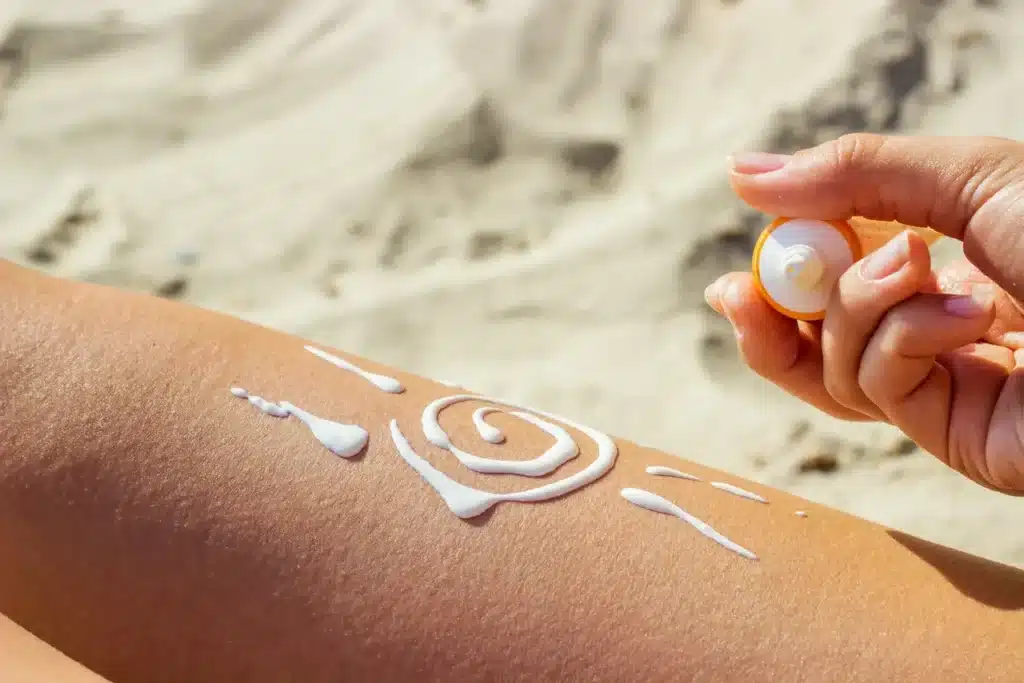
Ever wonder why sunscreen is touted as such a crucial part of your skincare routine? It’s not just about avoiding a sunburn (although that’s definitely a perk!). Sunscreen plays a vital role in protecting your skin from the sun’s harmful ultraviolet (UV) rays, which can damage your DNA on a cellular level and increase your risk of skin cancer.
UV rays come in two main types: UVA and UVB. UVB rays are the culprits behind sunburns, but both types penetrate the skin and can damage the DNA inside your cells. This damage can lead to mutations that cause abnormal cell growth, potentially leading to skin cancer.
So, how does sunscreen come to the rescue? Sunscreens are formulated with special ingredients that act like tiny shields, absorbing or reflecting UV rays before they can reach your skin cells. The Sun Protection Factor (SPF) you see on sunscreen labels indicates the level of protection against UVB rays.
But have you ever wondered what the numbers on those sunscreen bottles truly mean? Let’s dive into the science behind SPF (Sun Protection Factor) and see if higher numbers really translate to a force field against sunburn.
SPF measures how much UV radiation is needed to cause sunburn on sunscreen-protected skin compared to unprotected skin. Imagine you burn in 10 minutes without sunscreen. An SPF 15 sunscreen would theoretically extend that time by a factor of 15, allowing you to withstand 150 minutes (10 minutes x 15) of sun exposure before burning.
Here’s the catch: SPF is a guideline, not a guarantee. Several factors influence its effectiveness:
- Skin type: Fairer skin burns faster, requiring higher SPF protection (SPF 30 or higher).
- Sun intensity: Midday sun is harsher, demanding reapplication more frequently than during morning or evening hours.
- Amount applied: Skimping on sunscreen leaves unprotected areas vulnerable. Apply liberally and evenly!
- Water and sweat: Swimming or sweating washes away sunscreen. Reapply often, especially after swimming or vigorous activity.
Now, about those SPF numbers. While SPF 30 blocks about 97% of UVB rays (the ones causing sunburn), SPF 50 blocks 98%. That 1% difference might seem negligible, but for people prone to sunburn, it can make a significant difference. However, SPF 100 only blocks 99% of UVB rays, so the benefit beyond SPF 50 is minimal.
Sunscreens come in two main categories:
- Chemical sunscreens: These absorb UV rays, converting them into heat that dissipates from the skin.
- Physical sunscreens: These contain minerals like zinc oxide and titanium dioxide, which sit on the skin’s surface, reflecting and scattering UV rays.
Both types offer protection, but physical sunscreens may be better for sensitive skin as they tend to be less irritating.
Here are some key takeaways to consider when selecting sunscreen:
- Broad Spectrum Protection: Look for “broad spectrum” on the label, indicating protection against both UVA and UVB rays.
- SPF 30 is Sufficient for Most: For everyday use, SPF 30 sunscreen provides ample protection. If you have fair skin, burn easily, or spend extended time outdoors, SPF 50+ might be a better option.
- Reapplication is Key: Regardless of SPF, reapply sunscreen every two hours, or more often if sweating or swimming.
Remember, SPF is just one piece of the sun protection puzzle. Here’s how to maximize your sun safety:
- Seek shade, especially during peak sun hours (10 am – 4 pm).
- Wear protective clothing, like hats and long sleeves.
- Reapply sunscreen every two hours, or more often if swimming or sweating.
- Don’t forget areas like your ears, lips, and the tops of your feet.
By understanding SPF and practicing sun safety, you can enjoy the outdoors while safeguarding your skin from the sun’s harmful rays, reducing your risk of skin cancer, and keeping your skin healthy and youthful-looking for years to come.
